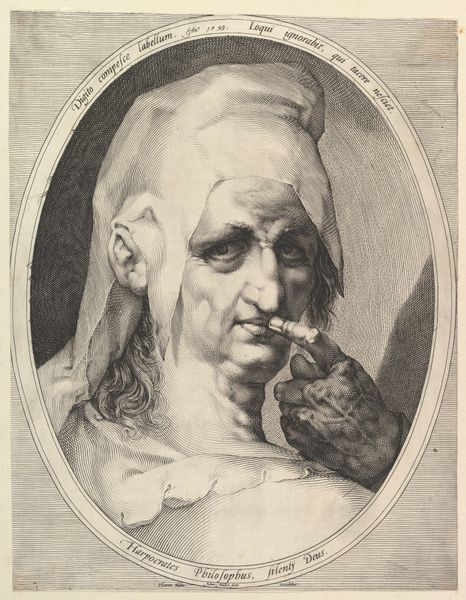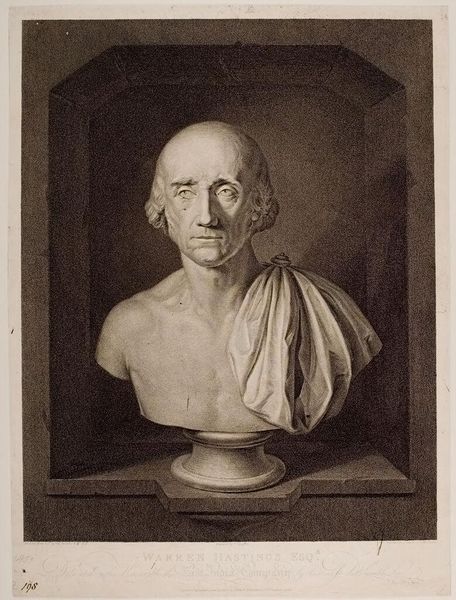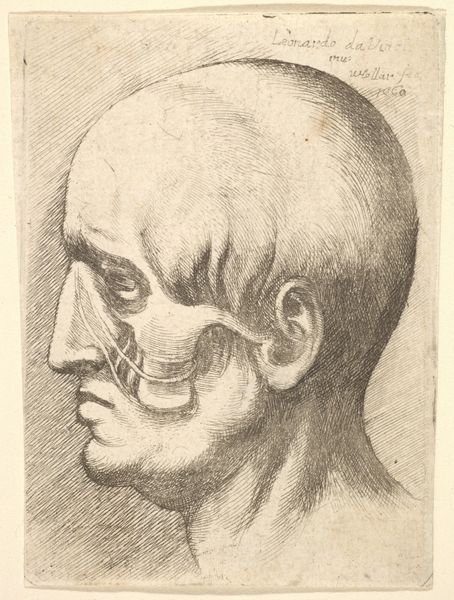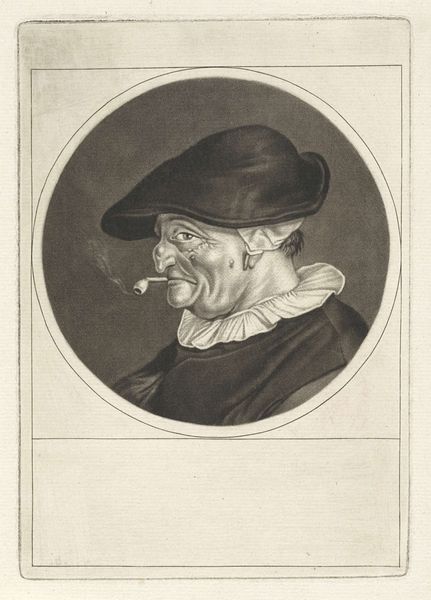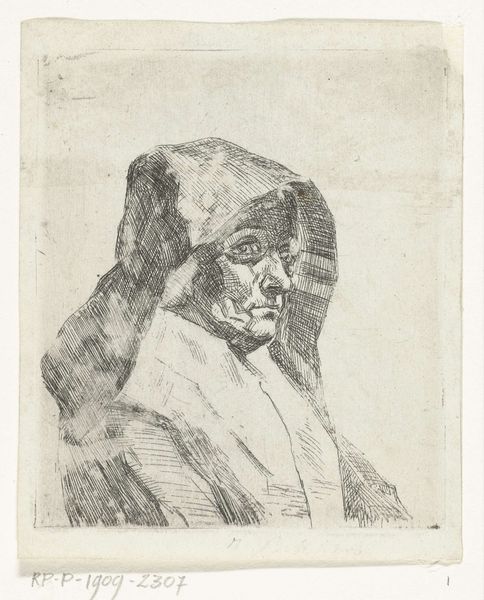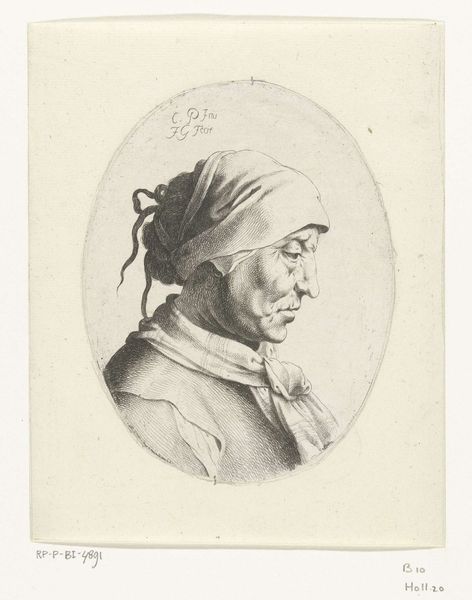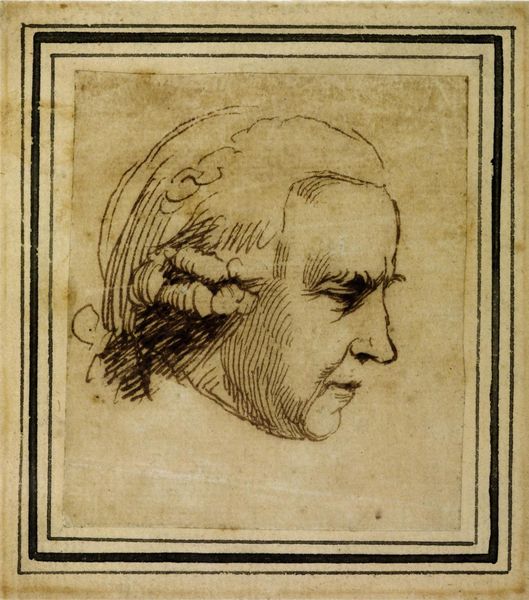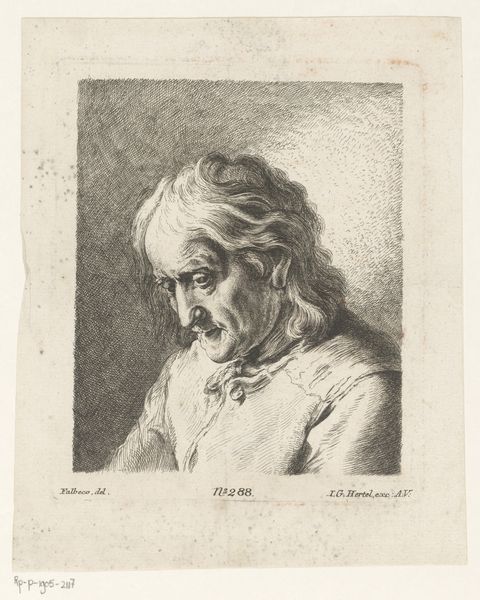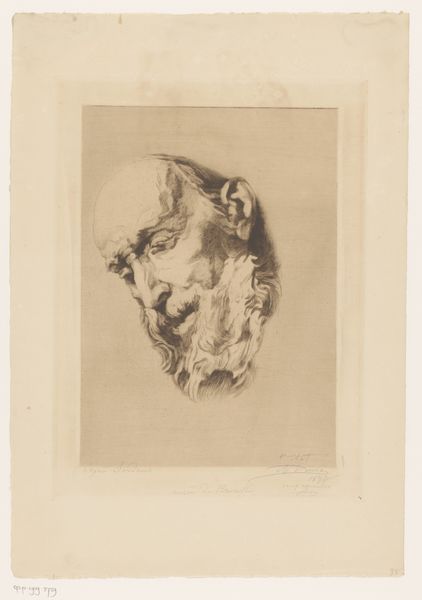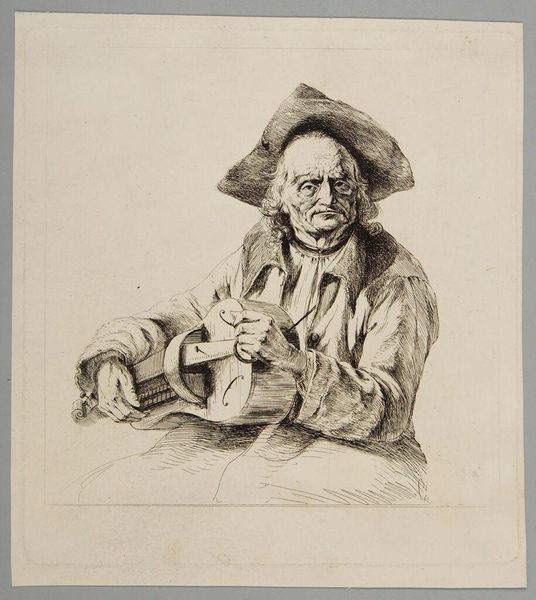
Dimensions: plate: 48.1 x 37.3 cm (18 15/16 x 14 11/16 in.)
Copyright: CC0 1.0
Curator: Jan Harmensz. Muller created this engraving, "Harpocrates," sometime around the late 16th or early 17th century. What strikes you initially? Editor: The shading is incredible; see how Muller uses such fine lines to create a sense of depth and texture, especially in the face and the hand silencing Harpocrates. It's quite unsettling. Curator: Indeed. The silencing gesture is central. Harpocrates, the god of silence, secrets, and initiation, was particularly relevant during periods of political or religious oppression. Editor: Oppression manifested how? Curator: Consider the social anxieties of the time, particularly religious or political dissent requiring guarded expression, or even complete suppression, of certain viewpoints. Editor: So, silence becomes a symbol of both power and powerlessness. It's a visually compelling piece, even when divorced from its historical context. Curator: Absolutely, and seeing it this way allows us to reflect on our own relationships with speech, silence, and the structures that govern them. Editor: I agree. It's a reminder that even aesthetic choices reflect deeper societal tensions.
Comments
No comments
Be the first to comment and join the conversation on the ultimate creative platform.
